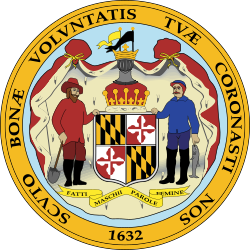| |||||||||||||||||
| |||||||||||||||||
| |||||||||||||||||
| Elections in Maryland |
|---|
 |
The 1817 Maryland gubernatorial election was held on December 8, 1817, in order to elect the governor of Maryland. Incumbent Federalist governor Charles Carnan Ridgely was re-elected by the Maryland General Assembly against former Democratic-Republican governor Robert Bowie, fellow former Democratic-Republican governor Edward Lloyd and former Federalist United States senator Charles Carroll. [1]

